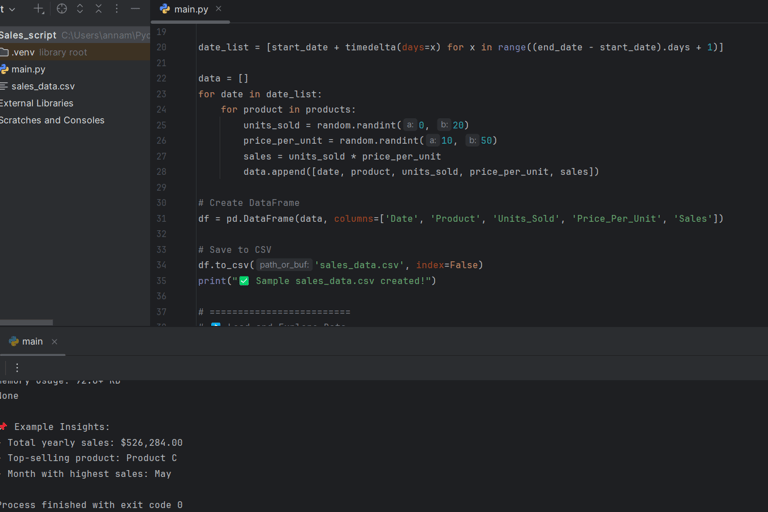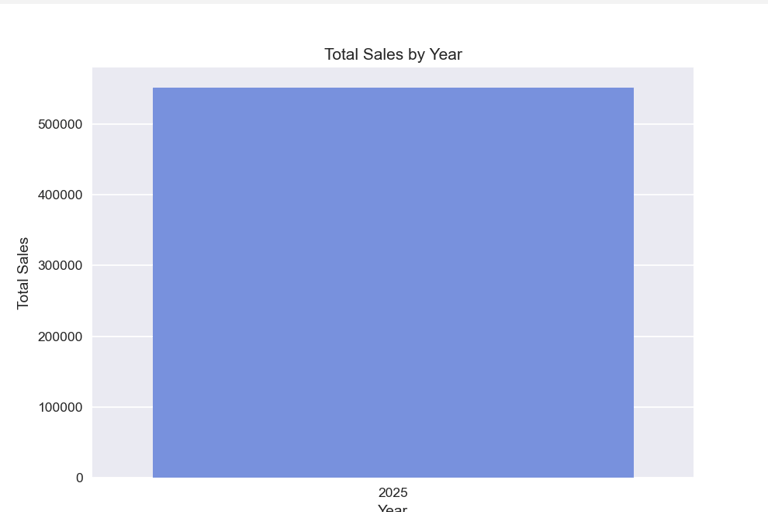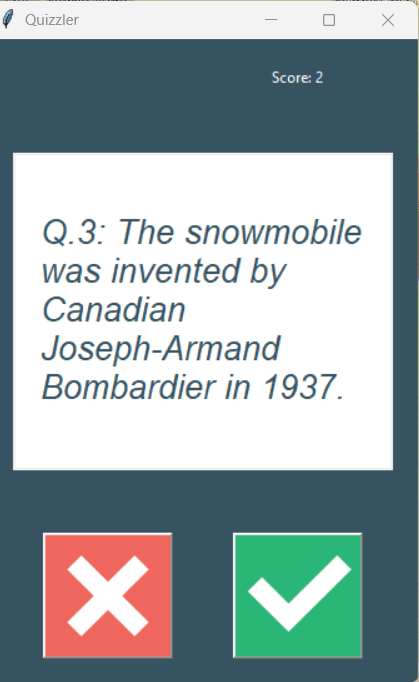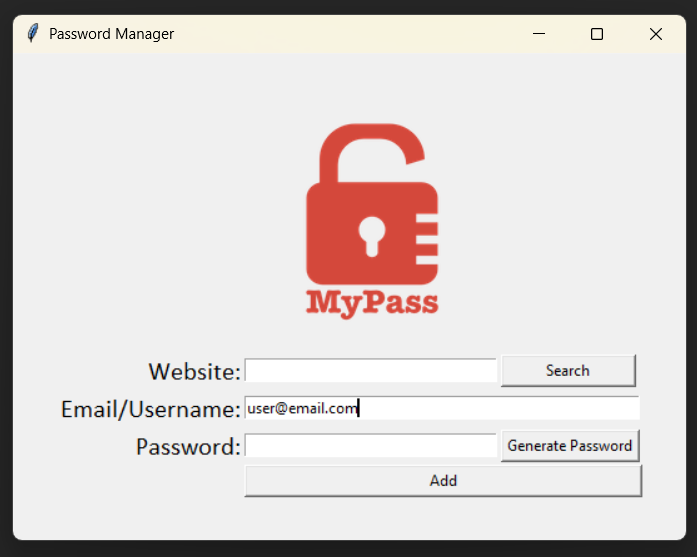Today's project:
Sales Data Analysis with Python
October 8, 2025
A Python script that transforms raw sales data into clear insights and visualizations.
Who knew numbers could be so chatty? 🗣️ With this project, I learned how to make sales data talk — from telling me which products are the real MVPs to revealing the months that go wild with revenue. Python, Pandas, and I are now officially on a first-name basis! =)
Highlights:
Generates a sample sales dataset for multiple products.
Cleans and organizes data for easy analysis.
Visualizes trends, top products, and monthly performance.
Summarizes key insights like peak sales periods and best-selling items.








🧠 I Built a Quizzler App in Python — Here’s What Happened
I love trivia nights. The only thing better than answering random questions is stumping my family with them. So when I started learning Python, I thought: what if I could build my own quiz game?
And just like that, Quizzler was born. 🎉
🎮 Meet Quizzler
Quizzler is a simple, fun little app I built using Python and Tkinter. It asks True/False questions, tracks your score, and gives instant feedback — green for correct, red for incorrect. Nothing like a little positive reinforcement, right? ✅❌
Here’s a peek at how it looks:
👉


⚙️ How It Works (without getting too geeky)
The brain 🧠 → I created a QuizBrain class that handles questions, answers, and score tracking.
The face 🎨 → Tkinter makes the interface, complete with True/False buttons and a score label.
The magic ✨ → When you press a button, the app instantly tells you if you’re right and moves to the next question.
And yes, those shiny buttons you see? They’re powered by two little images (true.png and false.png) that I had to wrangle into my app using PyInstaller. (Let’s just say I got very familiar with the error message “couldn’t open true.png.” 😅)
🧩 What I Learned
This project stretched me in all the right ways. I picked up:
How to split code into multiple Python files without losing my mind.
How to use Canvas in Tkinter for dynamic text.
How to package a Python program into a Windows .exe file so anyone can run it — even without Python installed.
🚀 What’s Next?
I’m not done with Quizzler yet. Future ideas:
A timer for each question ⏱️
Multiple-choice support instead of just True/False ✅
A high-score leaderboard 🏆
If you’d like a copy of Quizzler to try out for yourself, just reach out to me — I’ll be happy to share it with you!
Building Quizzler reminded me why I love learning: it’s part logic, part creativity, and part problem-solving. Plus, it gave me a new way to combine my love of trivia with my growing Python skills.
Who knows? Maybe I’ll bring it to my next trivia night. 🥂
My Python Project: Building a Password Manager with Tkinter
As part of my ongoing journey to sharpen my Python skills, I’ve been working on a project that’s both practical and a great learning experience: a Password Manager built with Tkinter.
Why This Project?
In today’s world, keeping track of multiple accounts and strong passwords can be overwhelming. I wanted to create a tool that makes managing them easier, while also pushing myself to learn more about GUI development in Python.
How It Works
This password manager:
Lets you add and save account details (website, username, and password)
Includes a simple interface built with Tkinter, making it easy to use
Generates strong, random passwords to help improve security
Allows you to quickly retrieve stored entries when needed
Currently, this project is designed as a learning tool, so it doesn’t include encryption yet—but it’s a strong starting point for future enhancements.
What I Learned:
This project gave me hands-on experience with:
Tkinter for building user interfaces
Structuring Python code into functions and modules
Handling user input and storing data for later use
Next Steps
I plan to keep improving this project, such as adding encryption and exploring database storage options. Beyond this specific program, I see it as part of a bigger journey: building projects that not only strengthen my skills but also create something useful.
If you’re interested in following along as I build more projects, keep checking back—I’ll be sharing more of my work here.


Top 3 Emerging Gadgets for Remote Workers in 2025
Remote work isn’t just a passing trend — it’s become the new normal for millions of professionals around the globe. And as our workspaces evolve, so do the tools we use. The right gadget can boost productivity, improve comfort, and make the work-from-home experience more enjoyable.
Whether you’re a digital nomad, a part-time remote worker, or running your own business from home, here are the top 3 emerging gadgets for remote workers in 2025 that you’ll want to keep on your radar.
1. AI-Powered Smart Desk Organizer
Gone are the days of sticky notes scattered across your desk. This smart organizer uses artificial intelligence to:
Track your daily schedule and remind you of upcoming tasks
Suggest break times for better productivity
Manage desk clutter by assigning spots for your essentials
Even remind you to hydrate during the day
Why it’s trending: Remote workers are juggling multiple apps, devices, and deadlines. This gadget pulls it all together into one streamlined system, helping you focus on work instead of your mess.
💡 Pro Tip: Pair it with a wireless charging pad for a truly streamlined setup.
2. Adaptive Ergonomic Desk Chair
Sitting for hours can wreak havoc on your posture and energy levels. The latest adaptive ergonomic chairs go beyond lumbar support:
Built-in posture sensors adjust the chair’s shape in real time
Tracks sitting habits and sends gentle reminders to stretch
Breathable, temperature-regulating fabric for all-day comfort
Why it’s trending: More remote workers are prioritizing wellness and investing in gear that supports long-term health. This is one of the best “quality-of-life” upgrades for your home office.
💡 Pro Tip: Pair with an adjustable standing desk to switch up your working position.
3. Ultra-HD Wireless Conference Camera
Zoom fatigue is real, but bad video quality makes it even worse. The latest 360° conference cameras offer:
Automatic speaker tracking so your colleagues always see who’s talking
Background noise suppression for crystal-clear audio
Ultra-HD video for a professional look during calls
Plug-and-play setup — no complicated software needed
Why it’s trending: Hybrid work models are here to stay, and clear, high-quality communication tools help bridge the gap between in-person and virtual teams.
💡 Pro Tip: Use a ring light alongside the camera for a polished, on-camera presence.
The Bottom Line
As remote work continues to grow, so does the innovation behind the tools we use. These three gadgets are more than just tech — they’re investments in your productivity, comfort, and connection with your team.

